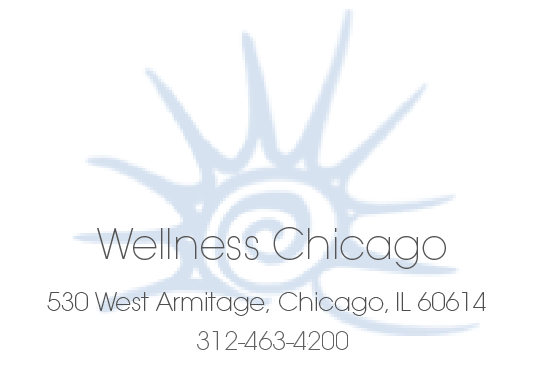We are not in favor of pain here at Wellness Chicago. Everything that we do is designed to prevent, reduce or eliminate pain. In fact, we do everything possible to keep our treatments free of pain and discomfort. Dr. Dearinger feels that an essential component of successful manual therapy is to bring the body into a relaxed state, where the parasympathetic part of the autonomic nervous system is predominant. The parasympathetic system stimulates digestion, slows the heart, and relaxes skeletal muscle, allowing for recuperation and restoration.
The following explains in detail the techniques used in each discipline to keep pain to a minimum:
Chiropractic Traditional chiropractic manipulative therapy involves the use of the “dynamic thrust” to induce motion into a joint, usually a vertebral facet joint. Occasionally this procedure is painful, and more frequently it is somewhat jarring, which can be uncomfortable for the patient. Neither the pain nor the jarring of the dynamic thrust is conducive to relaxation and so Dr.D avoids using the quick, high-velocity dynamic thrust. Instead, she uses a series of manual therapies, including strain/counter strain, myofascial release, and other IMT release and decompression techniques in order to release hyper tonic muscles and connective tissues. This allows alignment to occur on its own, or with the assistance of a far gentler, slower manipulative technique. Not only is this process easier on the patient, but because it follows the actions and reactions of the musculoskeletal system, the corrections last much longer, and fewer treatments are required to resolve the condition.

Acupuncture Acupuncture involves inserting needles into the skin. Many people find the very idea frightening. However, modern acupuncture uses very, very thin needles—finer than a human hair—and these needles are disposable, so that they are always brand-new and therefore extremely sharp. The sensation of a needle entering the skin ranges from undetectable to akin to a mosquito bite. The pain, if any, dissipates within seconds and is followed by a deep sense of relaxation
Craniosacral Therapy. This therapy is extremely gentle. Our craniosacral therapist, Sara Johnston, uses the Milne methodology, which most patients find to be gentler than other cranial therapies. The purpose of the Milne method is to work always in harmony with the body, never fighting against it. This type of cranial work is therefore well suited to infants and children as well as adults. We are always amazed in the clinic at how quiet babies and young children become during a treatment, and how eager they are for a return visit.
IMT(Integrative Manual Therapy) IMT is the main component treatment used by physical therapists at Wellness Chicago. The manual therapies used are low force, usually using about five grams of pressure, and care is taken to keep the patient not only pain-free but also comfortably supported during the treatment. All the IMT protocols are designed to enhance the parasympathetic nervous system (see the Chiropractic section for more detail)in order to facilitate working with the body, not against it. When exercises and other “homework” is given as part of the therapy regimen, it is always designed to be performed incrementally, i.e. introduced in baby steps, so that the activity never becomes painful.
Massage therapy Therapeutic massage uses pain levels as patient feedback, both in locating problem areas, and evaluating effectiveness of the treatment. In most kinds of massage therapy work, then, discomfort or even some level of pain is unavoidable. Even in massage work, however, pain must be kept at a manageable level. Some individuals think that if they just grit their teeth and suffer through it, more pain will mean more resolution of the problem. This is not true. Too much pain sends a message to the body that more guarding is necessary, and as a result, tissues contract and resist the work. Our massage therapists will always encourage patients to give them feedback about the pain they are experiencing. There are some types of massage therapy that do not evoke as much pain response. These include myofascial release and positional release therapies. If you are a person who can become very sore the day after a massage, or if you are otherwise very sensitive to pain, these techniques and others designed to be painless may work better for you.
